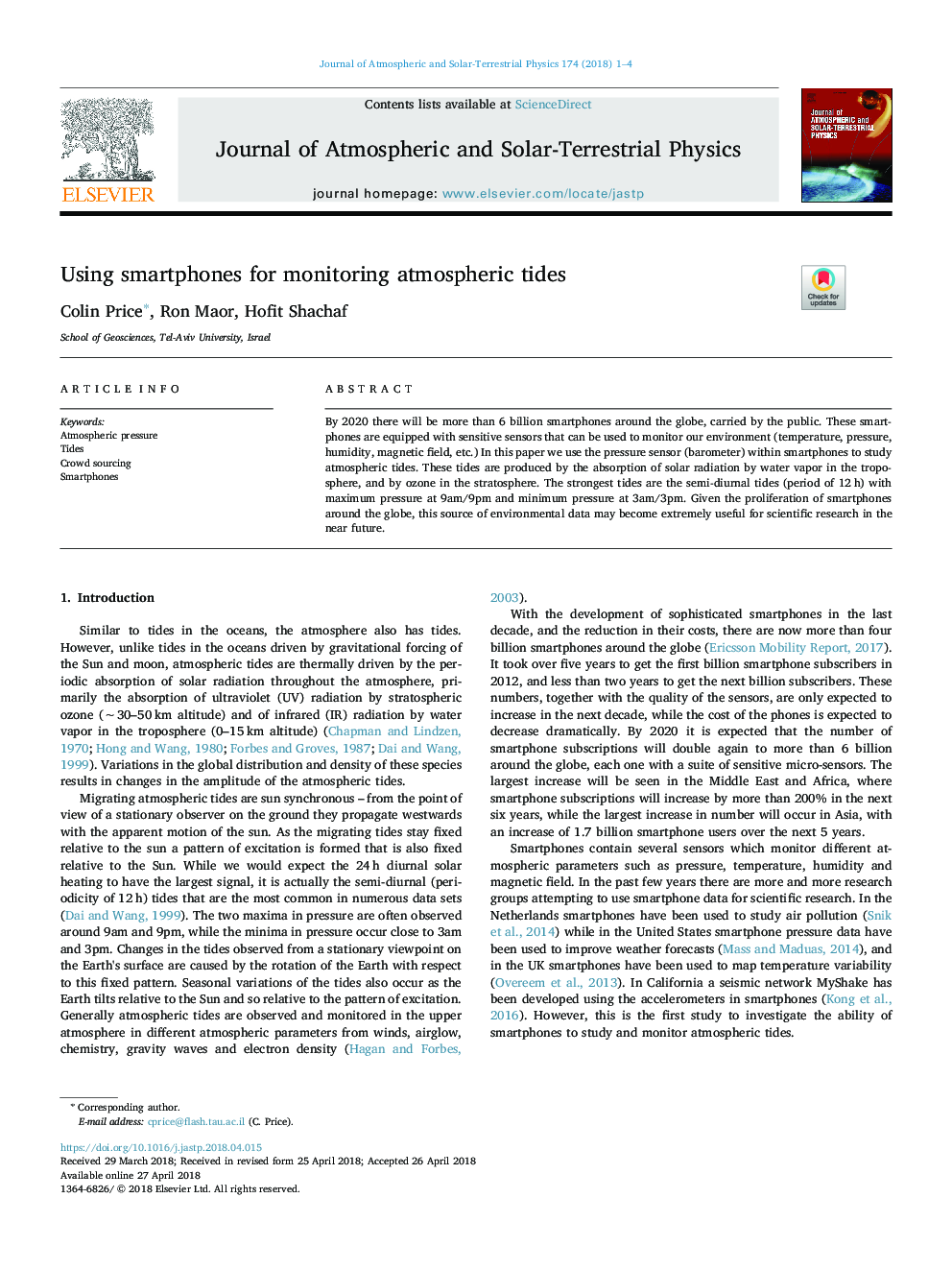| Article ID | Journal | Published Year | Pages | File Type |
|---|---|---|---|---|
| 8139276 | Journal of Atmospheric and Solar-Terrestrial Physics | 2018 | 4 Pages |
Abstract
By 2020 there will be more than 6 billion smartphones around the globe, carried by the public. These smartphones are equipped with sensitive sensors that can be used to monitor our environment (temperature, pressure, humidity, magnetic field, etc.) In this paper we use the pressure sensor (barometer) within smartphones to study atmospheric tides. These tides are produced by the absorption of solar radiation by water vapor in the troposphere, and by ozone in the stratosphere. The strongest tides are the semi-diurnal tides (period of 12â¯h) with maximum pressure at 9am/9pm and minimum pressure at 3am/3pm. Given the proliferation of smartphones around the globe, this source of environmental data may become extremely useful for scientific research in the near future.
Related Topics
Physical Sciences and Engineering
Earth and Planetary Sciences
Geophysics
Authors
Colin Price, Ron Maor, Hofit Shachaf,
